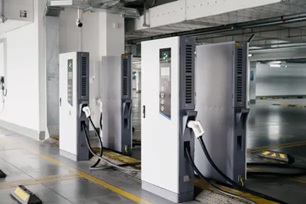


Level 3 Electric Vehicle Charger: Speed, Technology, and the Future of EV Charging
Introduction
The electric vehicle (EV) revolution is accelerating, and with it, the need for faster, more efficient charging solutions. Level 3 chargers, also known as DC Fast Chargers (DCFC), are the fastest and most powerful charging option available today. Designed to significantly cut charging times, these chargers are vital for highway rest stops, commercial fleets, and urban fast-charging hubs.
Whether you drive a Tesla, Nissan Leaf, or Porsche Taycan, Level 3 chargers are often your go-to solution when you want to recharge in less than an hour. Delivering between 50 kW and 500 kW of power, they can add 100 to 250 miles of range in 30 to 45 minutes, depending on your vehicle and battery state.
Level 1 and Level 2 chargers send alternating current (AC) to your vehicle, relying on its onboard charger to convert it into direct current (DC) to charge the battery. This onboard conversion limits charging speed. Level 3 chargers, by contrast, perform this AC-to-DC conversion internally and deliver high-voltage DC directly to the battery, bypassing the onboard charger and enabling much faster charging.
Level 3 chargers typically operate at voltages from 400V up to 800V or more, accommodating the high-voltage battery systems in today’s EVs.
Power output: 50 kW to 500 kW
Voltage: Usually 400V to 800V DC
Charging speed: Up to 20 miles of range added per minute
Ideal for: Long trips, fleet operations, urban charging hubs, and commercial sites
Tesla’s Supercharger network is a widely known example, with chargers delivering up to 250 kW. Other major providers like EVgo, Electrify America, ChargePoint, and EVESCO offer a variety of Level 3 stations. EVESCO’s EVDC series, for example, supports power outputs from 60 kW to 360 kW, offers intelligent dual-vehicle charging, and complies with OCPP 1.6 and ISO 15118 standards.
Electricity is transmitted efficiently as AC but EV batteries require DC to charge. Level 1 and 2 chargers rely on the onboard charger for conversion, limiting speed to about 1.4 kW (Level 1) or 19.2 kW (Level 2). Level 3 chargers convert AC to DC externally and feed power directly to the battery at high voltages and currents, drastically reducing charge times.
Charging speed depends on battery state of charge (SOC). When the battery is low, it accepts maximum power, but above 80%, charging slows down to protect battery health. For this reason, charging from 10% to 80% is much faster than topping up to 100%.
| Power Output | Approximate Range Added per Minute |
|---|---|
| 50 kW | 3–4 miles |
| 150 kW | 9–12 miles |
| 350 kW | Up to 20 miles |
CCS: Most common in North America and Europe
CHAdeMO: Used in Japanese EVs like Nissan Leaf
Tesla: Proprietary, but increasingly compatible with CCS adapters
Many Level 3 chargers support multiple connector types to serve diverse vehicles.
Fast charging produces more heat, which can accelerate battery wear over time if used daily. Modern EVs use advanced thermal management to mitigate this. For most drivers, it’s best to use Level 1 or Level 2 chargers for everyday charging and reserve Level 3 for longer trips or urgent needs.
Highways: Enable quick recharging on long journeys
Fleets: Reduce downtime for electric taxis and delivery vehicles
Urban hubs: Support rideshare drivers and busy EV owners
Commercial sites: Attract customers with convenient fast charging
As EV adoption grows, so does the demand for ultra-fast charging. Newer 800V vehicle architectures are designed to leverage chargers delivering over 300 kW. Investments from governments and private companies continue to expand fast-charging networks. Emerging tech like vehicle-to-grid integration and AI-driven energy management promise to further optimize Level 3 charging.
Conclusion
Level 3 EV chargers are revolutionizing electric mobility by drastically cutting refueling times and making EVs more practical for all drivers. Understanding their capabilities and benefits is crucial for EV owners, fleet operators, and infrastructure planners as the world moves toward a cleaner transportation future.Know more about Google SEO Directory
